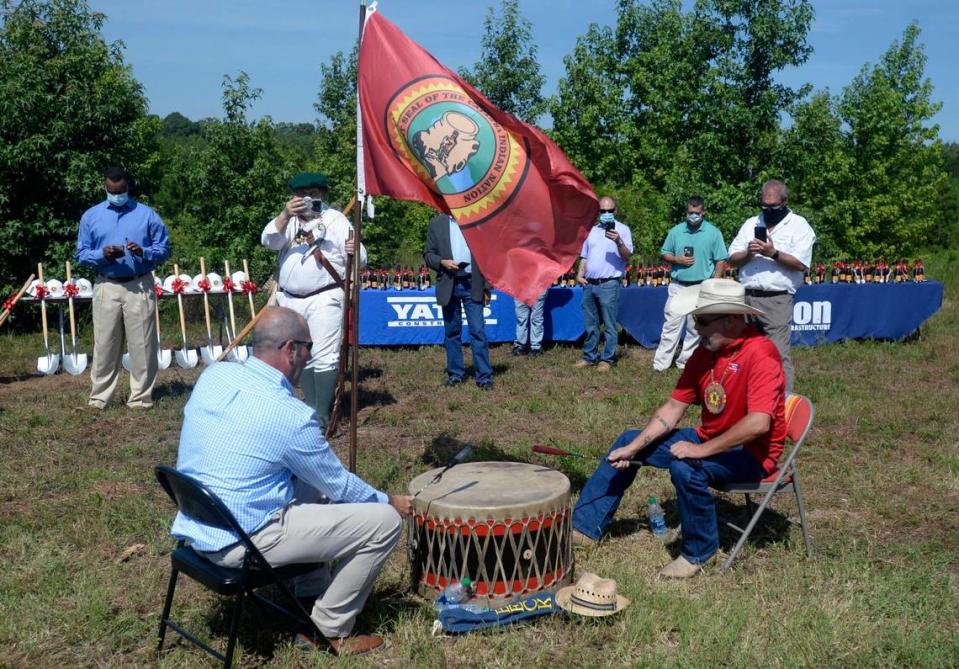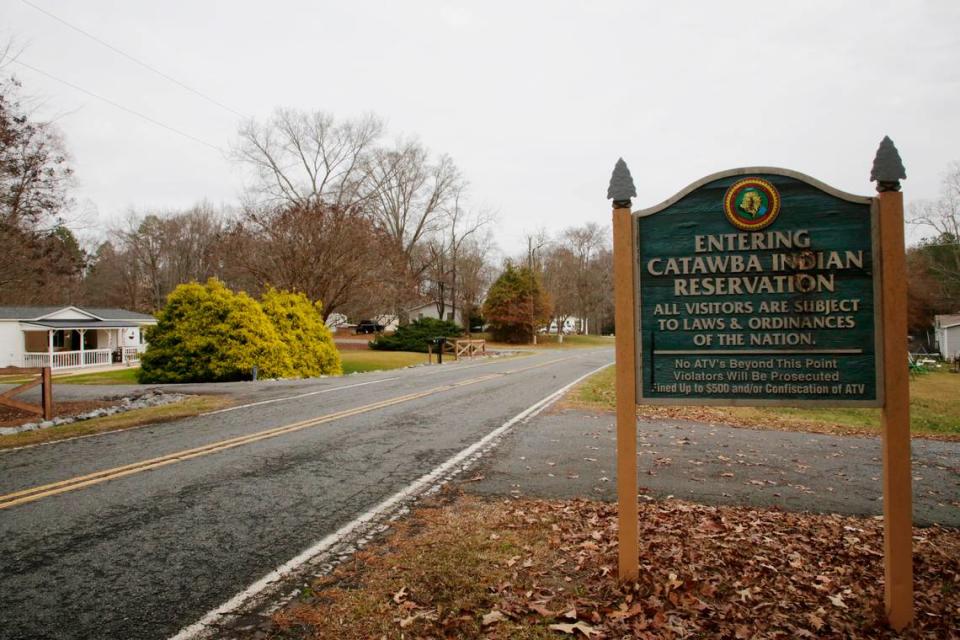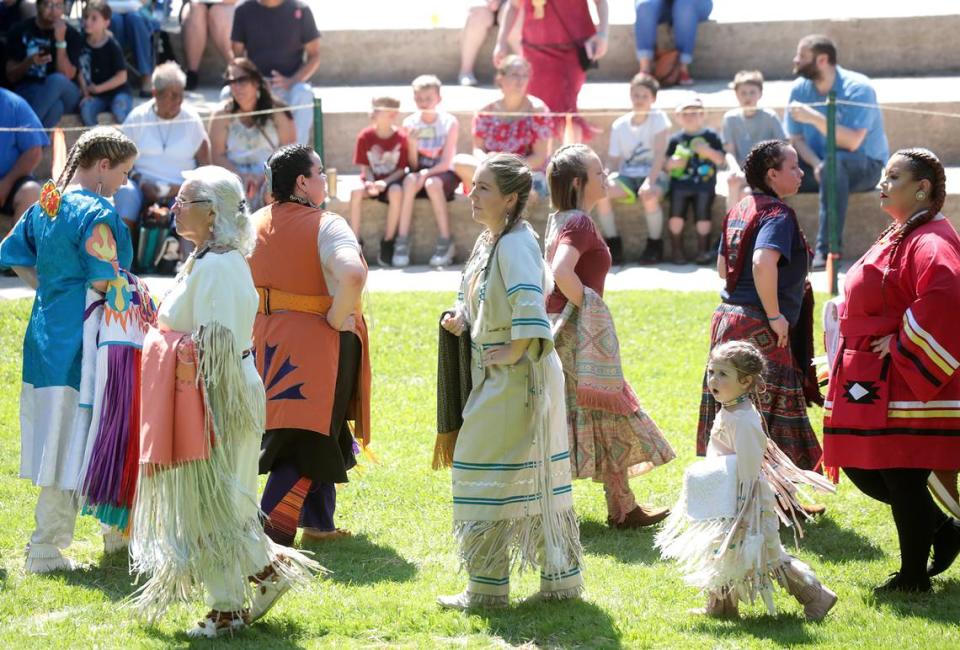Catawba Nation breaks into banking, will lead to first outside business at reservation
The Catawba Indian Nation’s South Carolina reservation near Rock Hill and Charlotte has never been accessible to outside businesses — until now.
For the first time, banks are invited to work under the Catawba’s jurisdiction by way of banking charters.
Last year, Catawba legislators created a Catawba Digital Economic Zone within the reservation which can establish commercial codes to do business with outside organizations, increasing the tribe’s economic development.
The board that oversees the economic zone created a banking code in April, allowing banks to create charters in the reservation. The board is focused on online banking, but could provide options to have brick and mortar branches and standalone ATMs on the reservation in the future, economic zone CEO Joseph McKinney said.
Tribal members always have been able to open an online banking account. The code provides the opportunity for commercial banks to do business on the reservation. Entrepreneurs within the Catawba Nation will have access to services like taking out loans to finance business projects on tribal land, McKinney said.
The code’s main objective is to provide the tribe with economic development through the fees banks will pay in exchange for the charters, and to provide commercial banking services for Catawba citizens.

The code mandates the creation of a banking commission, which will include banking experts and regulators who will decide what the rules for banks will look like. Eventually, the tribe hopes to create a public bank backed by and run by the tribe.
Public banks are owned and operated by a governing body, like the Federal Reserve. Establishing a public bank is difficult due to the amount of money needed to launch it. But once it’s created, it can help the community by issuing loans or lowering interest rates during times of financial crisis.
Why did the Catawba turn to banks?
The Catawba’s business expansion is focusing on projects that require a low cost of infrastructure, McKinney said, such as online financial institutions.
Banks are advantageous for early-stage economic development because they have a lot of growth potential, he said.
“(Indian tribes) have the least access to banking services out of any other group in the United States,” McKinney said. “So being able to have an ecosystem of banks to help service them would be very important.”
Through the Catawba tribe’s authority over the business on its land, it hopes to increase competition among banks, McKinney said. The bank code announcement also referenced a Federal Reserve statement on the consolidation of banks, and how the industry needs more small, independent banks.
A representative of the tribal leadership did not return repeated requests for comment from The Charlotte Observer.

Forging ahead with banking plans
The Catawba banking code combines elements of regulations from North Dakota, South Dakota and Wyoming.
The recognition that South Dakota’s banking system has received caught the attention of the Catawba. “Its probably the most successful banking code United States, measured by assets under management,” McKinney said.
South Dakota has over $3 trillion in commercial bank assets as of 2020, the most of any state.
Wyoming’s banking structure influenced the code through its focus in technology. The state’s Sandbox act allows a fintech like Ally bank or Paypal to seek a waiver for a “sandbox period,” which makes the service available to select customers for up to two years on a trial basis before it is officially authorized.
And North Dakota’s banking system is a model for the Catawba because of the success the state has had with its public bank, McKinney said. It’s the only state-run bank in the country.
While private bank charters can be expected by the end of the year for the Catawba, McKinney said the long-term vision is focused on having a public bank run by the tribe.
Once a Public Bank of the Catawba Nation is established, it can help regulate bank charters. This would be one of only three public banks in the country; the others are the Fed and the Bank of North Dakota.

What is North Dakota doing?
North Dakota established a state bank in 1919, after harsh weather conditions made it difficult for people to earn a living in its mainly agricultural market, according to the bank’s website.
The Bank of North Dakota is run by the state and functions like the Fed, meaning it can determine interest rates and make other moves to improve the financial market. It also can service North Dakota residents, state agencies or other banks.
A Catawba public bank could act in a similar way.
Lise Kruse, commissioner for the N.D. Department of Financial Institutions, doesn’t know if every state would be successful in creating a public bank. North Dakota’s bank found success partly because it was established so long ago. It takes a lot of capital, she said, and is run very conservatively.
The Bank of North Dakota “just is,” said Kruse. “It’s something we’ve always had, or had for over 100 years.”
As a state agency, the bank can provide assistance during crises like droughts or floods, bolstering the local economy.
“We haven’t had a bank failure for over 30 years,” said Kruse. “Some of that credit can go to the Bank of North Dakota because they’re a stable partner for our local community banks.”
Catawba tribe’s banking future
The Catawba are in the process of identifying potential investors for a public bank, Catawba Corporations President, Chris Shrum said. Catawba Corporations was established in 1996, and was the first organization dedicated to economic development in the reservation.
It will take hundreds of millions of dollars to establish the Public Bank of the Catawba Nation, Shrum said.
A public bank also would further the Catawba’s goals of financing tribal projects and lending money to the tribe and its citizens, Shrum said. “It’s a big undertaking,” he said. “Our hope is that we collectively realize financial gain for everybody, and provide a service for not just Catawba citizens, but to the country.”


